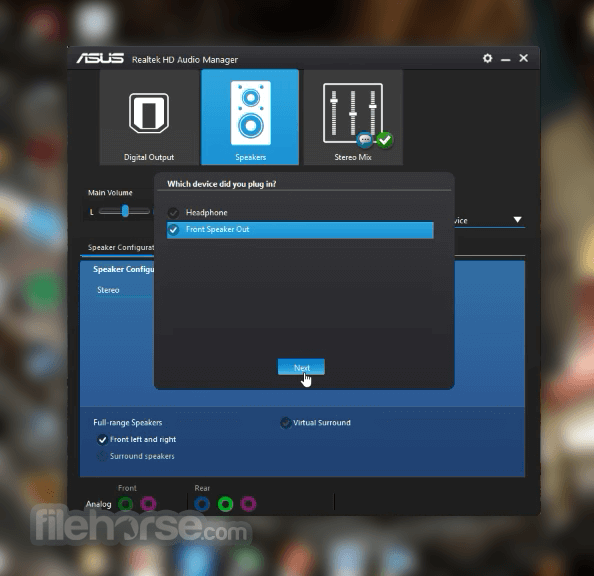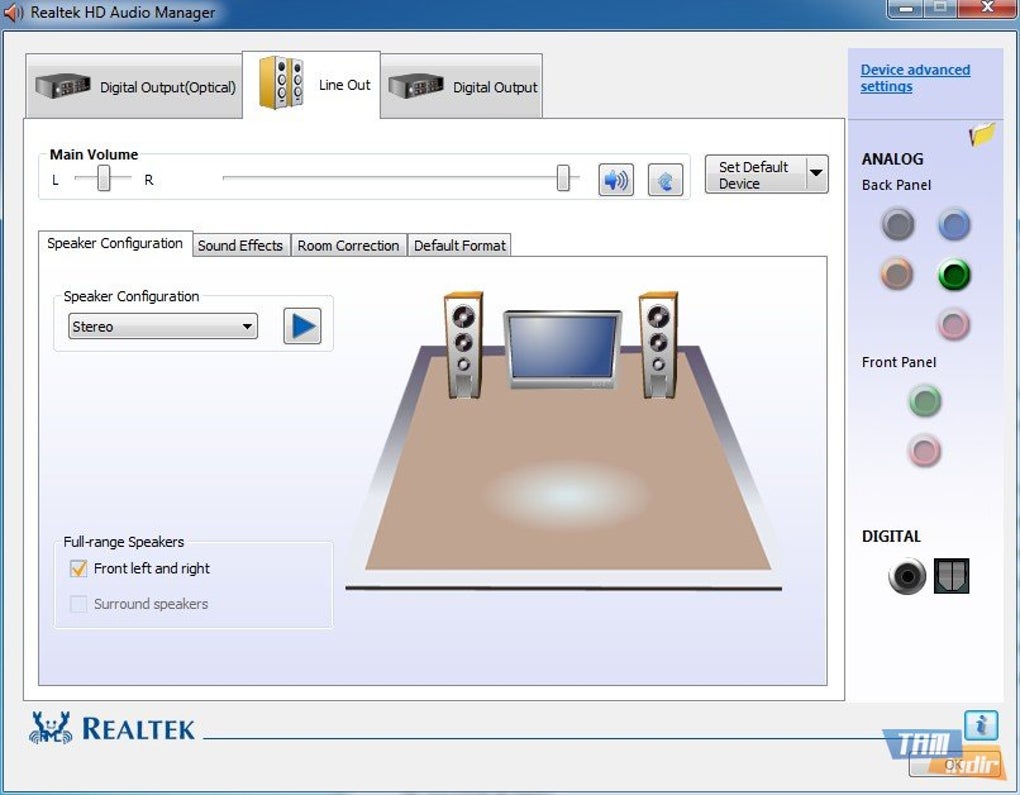Realtek HD Audio Drivers is a software package for Realtek High Definition audio codec. This will enable your computer to communicate with audio devices such as speakers and sound cards. It is important to have a 64-bit version of a Windows operating system installed in your computer before downloading Realtek HD Audio Drivers x64.
When the sound drivers get corrupted or damaged, then users experience various sorts of issues with the sound system of their computer. Sound drivers are often prone to wear and tear, therefore, if you are looking for solutions to restore sound drivers, then you have come to the right article.
In this article, we will help you understand various ways in which you can reinstall sound drivers. The four techniques we have elucidated below are immensely useful to troubleshoot and address numerous audio errors that you might be experiencing on your computer.
- Download and Installation Instructions. To ensure that no other program interferes with the installation, save all work and close all other programs. The Taskbar should be clear of applications before proceeding. Download the EP.exe file to a temporary or download directory (please note this directory for reference).
- Creative Sound Blaster Driver This download is a driver providing Microsoft® Windows® 8 support for Creative Sound Blaster® audio devices. This software includes support for Windows 8.1 (32-bit and 64-bit). For more details, read the rest of this web release note.
- Download Audio driver for the MSI K9N6PGM2-V2 motherboard. License: Free OS: Windows Vista Windows 7. Intel sound driver for windows 7 32-bit.
Universal Solution: Use Bit Driver Updater (Experts Recommended)

One of the fastest and safest solutions to uninstall and reinstall audio drivers is by using an automated driver update utility like Bit Driver Updater. If you don’t have adequate technical knowledge and time, Bit Driver Updater is your best bet.
To restore sound driver on Windows for free, click the button below!
How to Restore Audio (Sound) Drivers Windows 10?
Before I share with you the techniques of how to restore sound drivers, we will take a look at a step that you must perform.
The first step is to uninstall the existing audio drivers from the Windows PC, followed by reinstalling the audio drivers.
A. Uninstall The Audio Drivers
So, when it comes to uninstalling audio drivers, you can utilize the below steps:
Step 1. Hit Windows key + R key to open the Run dialog box and type the command – “devmgmt.msc.”
Step 2. This will take you directly to the Device Manager window where you can double click on the “Sound, video, game controllers” section to expand it and see the list of pre-existing audio drivers.
Step 3. Then, right click on the specific sound driver to select the option of “Uninstall” from the drop-down menu.
Step 4. Wait till the uninstallation completes.
Read Also: Download Generic PnP Monitor Drivers
B. Restore Sound Driver
Now let us take a look at how to reinstall audio drivers from the below methods:
Method 1. Restore Sound Drivers with Device Manager
Facilitated by Windows, users can fix audio driver issues by reinstalling audio drivers with the help of this built-in Windows tool, known as the Device Manager. Users can go back to the Device Manager window after uninstalling the audio drivers and follow the below steps to restore sound drivers:
- In the Device Manager window, click on the Action button located in the menu bar on top.
- Then, you can select the “Scan for hardware changes” option from the dropdown menu.
- Further, let Windows identify and install the right sound drivers on your Windows PC.
- You can restart the system and then find the newly installed audio drivers in your PC.

Read More: How to Fix Discord Screen Share Audio Not Working
Method 2. Restore Sound Drivers with Windows Update
Windows is equipped to constantly detect latest drivers and software releases and users can install the latest available updates with the help of the Windows Update service. The steps are outlined below for your ease to restore sound drivers:
- Launch the Settings app in your Windows 10 computer.
- Then, click on “Update & Security” option.
- Furthermore, you will have to choose the Windows Update option from the leftside menu and then press the Check for Updates button on the main screen.
- Windows will begin installing the available sound driver updates on your Windows system.
Sound Driver Download For Windows 8
Method 3. Restore sound drivers automatically
This method is the most accurate method to reinstall sound drivers on your computer without any hassles. You can install the best driver updater tool on your Windows PC that can scan and find the broken, outworn, or missing audio drivers of your Windows computer and replace them with the most recent versions of the audio driver.
Such a tool can automatically install the driver updates and ensure that the audio issues are sorted completely.
Hence, to make the task more convenient for you, we have brought one of the best driver updaters in town. You can use the impeccable Bit Driver Updater program to download, install, update, and reinstall sound drivers with a single click, and that too, without any manual interruption. Below are the step-by-step instructions on how to restore audio drivers and fix common sound problems related to it.
Step 1: Download the Bit Driver Updater application for free from the link given below.
Step 2: After successful installation, launch the application and click the ‘Scan Drivers’ button to let it find any problem drivers.
Step 3: After this, select the sound driver from the scanning results and click on the ‘Update Now’ button.
Simple, isn’t it? You can get rid of all the irritating sound and other driver-related problems by following the above three simple steps.
Method 4. Restore Sound Drivers from the Manufacturer’s Website
Still, wondering how to reinstall audio drivers on your PC? Though this method is not in trend due to the complications associated with it, besides being a time-consuming process, yet if you have the right technical skills, then you can try this method to obtain the right audio drivers for your computer.
You can go to the PC manufacturer’s page and then search for relevant drivers. Once you locate the specific audio driver package you can download and then install it on your PC.
Read Also: How to Fix No Sound Issues in Windows 10 PC

Were You Able to Restore Sound Drivers?
To put everything in a nutshell, we can say that whenever you are experiencing “no sound issues,” or any other problem, then you can restore sound drivers and fix the problem at hand like an expert.
Sound Driver Download For Windows 8
You can manually or automatically restore sound drivers as per the above-described techniques. If you experience any issues while executing or performing the above steps, then leave a comment below.

Install Instructions:
- Setup Driver for the first time
- Windows 2000, XP:
- Step 1. Before installing the Realtek High Definition Audio Driver, Press the [Cancel] button if Windows detect the Multimedia Audio device.
- Step 2. Run the setup.exe program to start the installation.
- Step 3. Click on [Next] to continue the procedure. If the screen resolution is lower than 1024*768,press [Yes] to continue the installation. If the Windows popup 'Digital Signature Not Found' message, press [Yes] to continue the installation.
- Step 4. Finally, select to restart the system and press [Finish] to complete the installation.
- Windows Vista, Windows 7, Windows 8:
- Step 1. Run the setup.exe program to start the installation.
- Step 2. Click on [Next] to continue the procedure. If the screen resolution is lower than 1024*768,press [Yes] to continue the installation. If the Windows popup 'Windows can't verify the publisher of this driver software' message, press 'Install this driver software anyway' to continue the installation.
- Step 3. Finally, select to restart the system and press [Finish] to complete the installation.
- Windows 2000, XP:
Updating Driver:
- Windows 2000, XP
- Step 1. Follow Step 2,3,4 described in [Setup at first time] above to complete the procedure.
- Windows Vista, Windows 7, Windows 8:
- Step 1. Run setup.exe, it will remove the original driver in your system.
- Step 2. Click 'Next' to remove the original audio driver in your system.
- Step 3. Once after the original driver removed , reboot the computer.
- Step 4. It will install audio driver automatically after computer restarted.
Removing Driver:
- Windows 2000 , XP
- Step 1. Go to StartSettingsControl Panel.
- Step 2. Select [Add or Remove Programs] icon.
- Step 3. Select 'Realtek High Definition Audio Driver' and press [Remove] button.
- Step 4. Click on [Yes] to finish the uninstallation.
- Step 5. At the end of the procedure, select to restart the system and press [Finish] to complete the uninstallation.
- Windows Vista, Windows 7:
- Step 1. Go to StartSettingsControl Panel.
- Step 2. Select [Programs] icon.
- Step 3. Select [Programs and Features] icon.
- Step 4. Select 'Realtek High Definition Audio Driver' and press [uninstall] button.
- Step 5. Click on [Yes] to finish the uninstallation.
- Step 6. At the end of the procedure, select to restart the system and press [Finish] to complete the uninstallation.
- Windows 8:
- Step 1. Go to Apps.
- Step 2. Select 'Control Panel' in 'Windows System'
- Step 3. Select [Programs and Features] icon.
- Step 4. Select 'Realtek High Definition Audio Driver' and press [uninstall] button.
- Step 5. Click on [Yes] to finish the uninstallation.
- Step 6. At the end of the procedure, select to restart the system and press [Finish] to complete the uninstallation.
Previous versions:
What's New:
- Windows 10 now supported.
- Customizations
- Add Codec ALC255, ALC235, ALC867
- Support Windows 8.1
Supported Products:
For Windows Vista, Windows 7, Windows 8, Windows 8.1 WHQL
- ALC882
- ALC883
- ALC885
- ALC886
- ALC887
- ALC888
- ALC889
- ALC892
- ALC899
- ALC861VD
- ALC867
- ALC900
- ALC660
- ALC662
- ALC663
- ALC665
- ALC668
- ALC670
- ALC671
- ALC672
- ALC676
- ALC680
- ALC221
- ALC231
- ALC233
- ALC235
- ALC255
- ALC260
- ALC262
- ALC267
- ALC268
- ALC269
- ALC270
- ALC272
- ALC273
- ALC275
- ALC276
- ALC280
- ALC282
- ALC283
- ALC284
- ALC286
- ALC290
- ALC292
- ALC383
For Windows 2000/XP WHQL:
- ALC880
- ALC882
- ALC883
- ALC885
- ALC886
- ALC887
- ALC888
- ALC889
- ALC892
- ALC899
- ALC861VC
- ALC861VD
- ALC867
- ALC900
- ALC660
- ALC662
- ALC663
- ALC665
- ALC668
- ALC670
- ALC671
- ALC672
- ALC676
- ALC680
- ALC221
- ALC231
- ALC233
- ALC235
- ALC255
- ALC260
- ALC262
- ALC267
- ALC268
- ALC269
- ALC270
- ALC272
- ALC273
- ALC275
- ALC276
- ALC280
- ALC282
- ALC283
- ALC284
- ALC286
- ALC290
- ALC292
- ALC383
HDMI Device WHQL Support: ATI HDMI Devices
Here's other similar drivers that are different versions or releases for different operating systems:- June 13, 2018
- Windows 10
- 146 MB
- January 13, 2017
- Windows 7/8/10
- 359 MB
- December 2, 2016
- Windows 7/8/10
- 354 MB
- May 14, 2014
- Windows 2000/XP
- 32.0 MB
- March 5, 2008
- Windows 2000/XP
- 25.4 MB
- November 12, 2013
- Windows Vista / 7 / 8 64-bit
- 100.2 MB
- November 11, 2013
- Windows Vista / 7 / 8 64-bit
- 109.0 MB
- November 8, 2013
- Windows 2000/XP
- 31.1 MB
- December 16, 2011
- Windows 2000/XP
- 32.0 MB
- June 23, 2012
- Windows 2000/XP
- 31.9 MB
